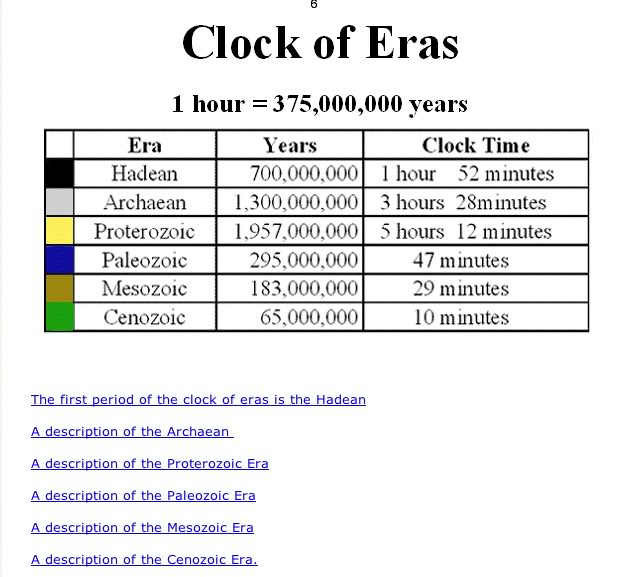As you are probably aware; there are two major models of how the continents, mountains, oceans, rivers, etc., developed. There is the long version, based on Charles Lyell’s, James Hutton’s, William Whewell, Alfred Wallace and Erasmus Darwin’s (father of Charles Darwin) theories of Uniformitarianism. Then there is the short version of Catastrophism, based on creation, which was believed by the entire world up until the church was over-run by secular scholars in the 17th and 18th centuries. These events were intended to happen as preperation for these times - the end-times.
A couple of points come to mind immediately.
In the first place, modern geology views Earth's geologic history neither as purely uniformitarian nor purely catastrophic, but rather as gradual processes over long periods (plate tectonics, erosion, uplift, etc) punctuated by catastrophic events over much shorter periods (Earth impact events, major volcanic events, earthquakes, etc). This model is supported by the great weight of evidence.
In the second place, it was not secular scholars alone who questioned a short, catastrophic history of Earth's geology. 18th and 19th Century clergymen-scientists - and secular scientists, all educated in and largely persuaded of biblical catastrophism as the key to Earth's geology - went looking for evidence of catastrophic events in Earth's past (specifically the Noachian deluge) and rather quickly came to the conclusion that none such existed. Furthermore,they noted that the processes that they did observe could be best explained by gradual processes over long ages. nothing has emerged in the last two centuries of investigation to overturn that viewpoint and, indeed, it has only been reinforced.
ETA See, for example,
http://books.google.co.uk/books?id=...nepage&q=british clergymen geologists&f=false
Â
This catastrophism view suggests that the world was shaped by a series of catastrophes, such as the Catastrophes that shaped the MOR, and the lavas that filled up much of the continent Lithosphere, as is observed through the Siberian and Deccan Steppes.
Â
There is a great deal written about this period, and the greatest scientific minds of the 20th century had invested their lives to these discoveries, such as Albert Einstein and Immanuel Velikovsky. Their collaboration together, along with dozens of other scientific pioneers, was the last book that Einstein worked on before his death, which is detailed in Velikovsky’s Earth in Upheaval.
Â
The explanation given by evolutionists for the development of the Siberian Steppes is that it was one continuous volcano that erupted for over 1 million years. Well, that’s a good story. But the likelihood is that this volcano which formed a continent (exemplary of all continents), took place over a much shorter period of time, such as a period of 1000 years (the 2nd day of creation).
Not a volcano, I think you will find, but rather a series of volcanic events resulting in flood basalt on near-continental scales. I would be interested in your account of how the outgassing and heat input into the atmosphere if these events took place over hundreds of years rather than hundreds of thousands of years can be explained without rendering Earth uninhabitable to most forms of life as we know them.
Â
As I have already mentioned, I “believe” that the earth was created in 6000 years, complete with animals and man, using the day = 1000 years principal. Â This was also taught by the Early Church Fathers, such as Cyprian. We have been on earth an additional 6000 - 7000 years since then, making a total of 12,000 – 13,000 years. Each of the major creation blocks (days) took 1000 years each to complete. Â I believe all of the clocks that exist on earth, such as Helium, Sea Salt, Sediment, Radiometrics, Zircons, Polonium, etc., all give an approximate history which recognizes these dates.
Well, to take your helium clock as the only example you have proffered to date, I would suggest that 175,000 years =/= 12,000 years, so I am not clear how this model supports your hypothesis.
The dating of the universe and light is also given a great amount of detail and research in Starlight and Time, by D. Russell Humphreys, PH.D. Â
Until you present your argument based on this research, I am unable to comment on this.
Â
There is ample scientific evidence to support a young earth creation. If you are searching for God and truth you will find it. If you are closed off to God and truth you will never find it. God has made these truths discoverable, but with effort. This is a very brief summary, but I hope this helps.
I appreciate your summary, but as it stands it is insufficient to convince. The contrary evidence seems overwhelming. For example, there is evidenced human activity on Earth long before 6000-7000 years ago and, if the biblical flood took place some 1500 years after the proposed date of creation, then one is left wondering where all the people came from that created the thriving civilisations that existed in several widely separate locations 4500-5000 years ago.
Â




